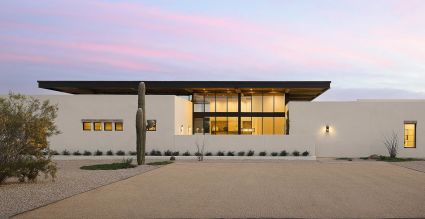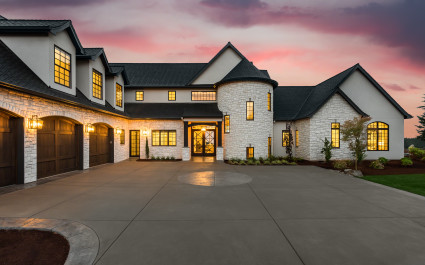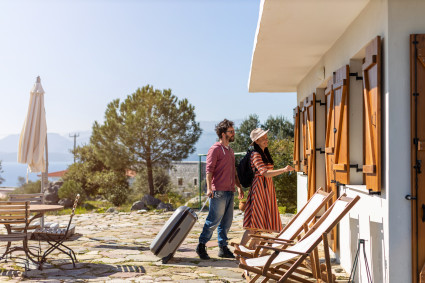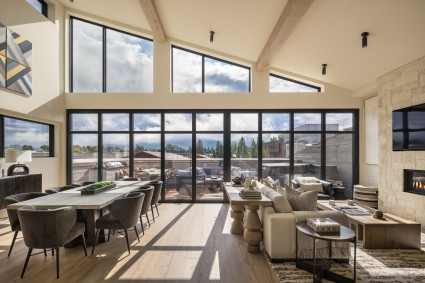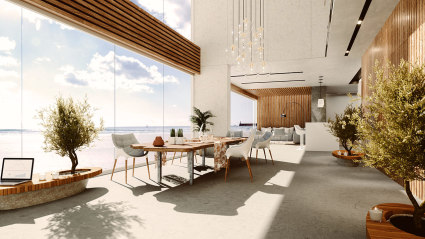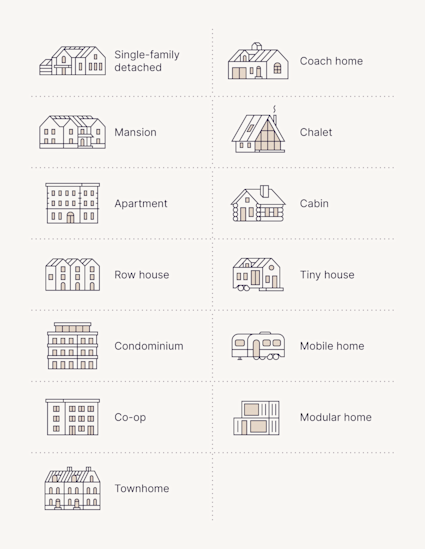
Types of house structures
Before we get to the different types of houses, it can be helpful to know the common types of home structures. Knowing whether you want a single-family home or a condo can narrow down your search and make it easier to find something that suits your budget and lifestyle.House structures:
Single-family detached
A single-family home is a structure that is not physically attached to other houses. These homes offer the highest degree of privacy and customization by the owner. They are most popular in areas with lower population densities. These house types are best for families wanting space and a yard, but not ideal for those preferring an urban, low-maintenance lifestyle.| Pros of single-family detached homes | Cons of single-family detached homes |
| More privacy | All costs fall to the owner |
| Can be customized by owner | Lack of public amenities |
| Owner has equity in the property | Require a long-term commitment |
Mansion
A mansion is a very large, lavish single-family home, usually over 5,000 square feet. They feature high-end materials, large grounds and many luxury amenities like home theaters and spas. There are many different types of mansions, ranging from historic estates echoing various architectural eras to modern custom-built residences.Mansions are ideal for those wanting ultimate richness and privacy, but they're not suitable for people who prefer low maintenance or city living.| Pros of mansions | Cons of mansions |
| Ample space | Homeowners insurance premiums are considerably higher |
| Lots of privacy | More expensive to purchase and maintain |
| Can be a symbol of wealth and success | Less energy efficient than other styles |
Apartment
An apartment is a residential unit contained within a larger building or complex. An apartment is only available for renting and requires a contractual agreement with the landlord. Some apartment buildings provide amenities such as pools and fitness rooms. Apartments are best for individuals or small families seeking flexibility and affordability, but aren't ideal for those desiring privacy, a yard or extensive customization.| Pros of apartments | Cons of apartments |
| Building amenities | Limited privacy |
| Landlord is responsible for routine maintenance and repairs | Limited options to customize |
| Renter has short-term commitments | No equity with rent payments |
Row house
A row house is a single-family home connected to others by shared side walls, usually with multiple stories. Compared to apartments, row houses offer more space and often a small private outdoor area, but they offer less privacy than detached homes. Row houses are ideal for those wanting a blend of city living and a bit more room, but not for people seeking large private land, complete detachment from neighbors or a fully maintenance-free life.| Pros of row houses | Cons of row houses |
| More space than apartments | Less privacy than detached homes |
| Small private outdoor space | Shared walls and potential noise from neighbors |
| Community feel | Less land and yard space |
Condominium
A condominium, or condo for short, is an apartment-like unit that is owned by an individual. The owner can make renovations and rent out the unit so long as they do not violate the rules of the homeowners' association (HOA). Condominiums are great for those wanting homeownership with less maintenance and a convenient location. However, they're not ideal if you need lots of privacy, a big yard or freedom from HOA rules and fees.| Pros of condominiums | Cons of condominiums |
| Require less upkeep than a detached home | Owner must abide by HOA rules |
| Owner has equity with mortgage payments | Limited privacy |
| Owner has access to shared amenities | Shared walls can result in unwanted noise |
Co-op
A housing cooperative, more commonly known as a co-op, has many similarities to a condominium but with more restrictions. Instead of purchasing a specific unit within the building, the buyer is purchasing shares in the company that owns the building. The number of shares the person owns translates to the size of their unit. This type of house is best for people who want a strong community and affordable access to good city areas. However, it's not for those who need total control over their property or fewer rules about how they live.| Pros of co-ops | Cons of co-ops |
| Less expensive than a detached home | Can be difficult to sell shares |
| Foster a sense of community with neighbors | Owner must abide by strict rules |
| Vetting of neighbors leads to a stable resident base |
Townhome
A townhome is a private unit that is attached to at least one other private unit. It usually has exterior access and multiple stories for added space. Townhomes sometimes provide access to shared building amenities. These are increasingly diverse in style, often incorporating elements of modern farmhouse and contemporary styles, and are some of the most popular homes in 2025.These styles of houses are ideal for individuals seeking more space and a private entrance, rather than an apartment. However, if you're looking for complete detachment from neighbors or no HOA fees, another home type may be a better fit.| Pros of townhomes | Cons of townhomes |
| Usually have more space than a condo | At least one shared wall with neighbor |
| Generally more affordable than a single-family home | Limitations placed on customizing exterior |
| Less exterior maintenance than a full detached house | Parking can be limited or require street parking |
Coach home
Coach houses, sometimes called carriages, were originally used to house horse-drawn carriages and were converted to be private dwellings. Now, a coach house can refer to any detached unit on the same property as another building. They can be rented out by the property owner of the main house or owned by a second individual. Coach houses are ideal for individuals wanting a detached home with less upkeep than a larger house and potential rental income. However, they're not great for those seeking a large yard or someone who wants full independence from the main property.| Pros of coach houses | Cons of coach houses |
| More privacy than an apartment | More expensive than a condo |
| Can be used as an investment property | Less freedom than a single family home |
| Has a distinctive architectural style | Tenants are subject to the main property owner's rules |
Chalet
A chalet is the traditional house of shepherds in Switzerland. Today, the term refers to a vacation home located in the mountains. They usually have easy access to ski routes and are specially designed with steep roofs to deter the accumulation of snow.Winter sports lovers and families wanting a cozy mountain getaway will love a chalet. However, it's not for those who prefer warm weather, flat areas or dislike being isolated.| Pros of chalets | Cons of chalets |
| Convenient access for outdoor activities | Limited use as a single-purpose getaway |
| Offers stunning outdoor views | Only suitable for mountain regions |
| Can be rented out to tourists during peak seasons | Can be expensive to heat |
Cabin
A cabin is a type of single-family structure defined by its minimalist features and rustic design. It is often used as a vacation residence but can also be a primary dwelling. Cabins are almost always located in remote areas.This home is great for nature lovers and those wanting peace and quiet. However, it's not ideal for people who need easy access to amenities or prefer a social city setting, as they might find it too isolated or uncomfortable.| Pros of cabins | Cons of cabins |
| Provide a high degree of privacy | Lack of amenities of a modern house |
| Significant connection to nature | Often far from services, stores and medical facilities |
| Unique aesthetic and a focus on essential living | More prone to encounters with insects and rodents |
Tiny house
A tiny home is usually considered to be any home under 400 square feet. Tiny homes were inspired by the modern trend of people downsizing their possessions and financial burdens.Tiny homes are best suited for minimalists and budget-conscious individuals who value financial freedom and a smaller environmental footprint. However, they are not ideal for families needing significant space or individuals who prioritize privacy and traditional amenities.| Pros of tiny houses | Cons of tiny houses |
| Affordable to build or purchase | Can be difficult to find a buyer |
| Contain some degree of modern amenities | Little personal space, especially for more than one person |
| Encourages a simpler lifestyle | Can feel cramped |
Mobile home
A mobile home is a factory-built house that can be towed to a lot for a semi-permanent residence. The mass-produced nature of mobile homes makes them an affordable option for home buyers. Mobile homes are often affordable options for people seeking homeownership and a community feel. This type of house may not be ideal for people prioritizing rapid property appreciation, extensive privacy or freedom from community rules.| Pros of mobile homes | Cons of mobile homes |
| Relatively inexpensive | May require monthly lot fees |
| Able to move locations | Do not age as well as traditional homes |
| Many parks offer shared facilities | Offers less privacy than detached homes on larger lots |
Modular home
A modular home has different sections that are fabricated in a factory. The sections are then shipped to the build site and assembled atop the foundation. Unlike mobile homes, modular homes are permanently affixed to real estate and built according to local and state building codes as traditional site-built homes.Modular homes are an excellent choice for budget-conscious buyers seeking faster construction and high-quality, factory-controlled builds. On the other hand, they might not suit those wanting extreme customization or extensive involvement in the on-site building process.| Pros of modular homes | Cons of modular homes |
| Fast construction time | Older homes were built with cheap materials and may require renovations |
| Higher quality than mobile homes | Difficult to sell due to old stigmas |
| Often more affordable than comparable site-built homes | Limited customization versus site-built homes |
Types of houses by architectural style
Now that you know the different structures that can make up a home, it’s time to dive into the different house style names and architecture styles you’ll likely come across. When we talk about house styles, we’re referring to the exterior aesthetics of each house and some of its practical functions.As you examine the different style homes available, take note of what is beneficial for the area you live in, versus what is simply decorative, as this can drive costs up unnecessarily. For example, while a home with tall ceilings and lots of windows may be great for hot climates, it’s going to raise heating costs in areas with harsh winters. For those especially passionate about design, you might enjoy exploring some luxury homes for the architecture-obsessed.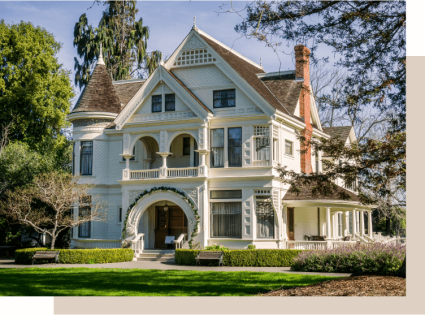
Victorian
| Historical significance | Among the first widespread homes for the middle class |
| Area of origin | Great Britain, during Queen Victoria's reign (1837-1901) |
- Ornate designs
- Large porch
- Bright colors
- Bay windows
- Turrets
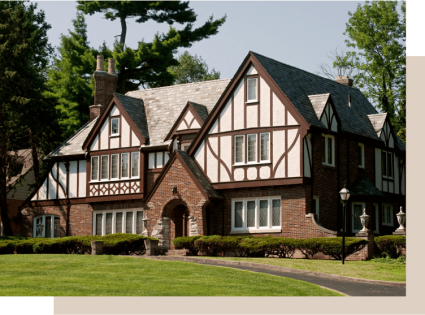
Tudor
| Historical significance | Represents a transition from medieval Gothic to early Renaissance architecture in England |
| Area of origin | England and Wales during the Tudor period (1485-1603) |
- Asymmetrical structure
- Mostly brick exterior
- Timber frame with white stucco filling
- Shingled roof
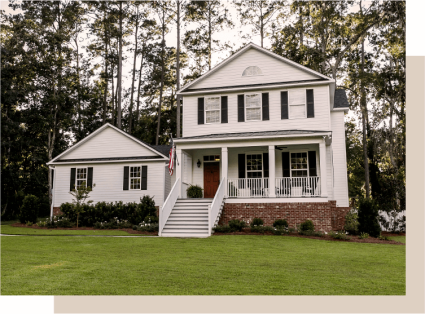
Farmhouse
| Historical significance | Designed for large, hardworking families and defined by functionality and practicality |
| Area of origin | Germany and Scandinavia |
- Exposed wood beams
- Tall ceilings
- Large porch
- Rectangular layout
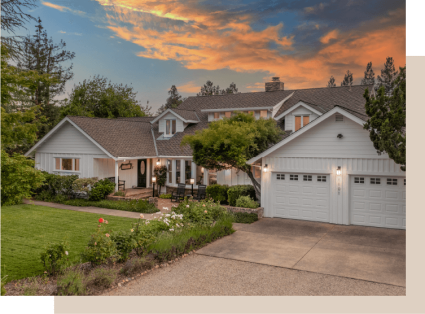
Modern Farmhouse
| Historical significance | A contemporary fusion of rustic farmhouse charm with modern design |
| Area of origin | Evolved from traditional European and American farmhouses |
- Galvanized steel
- Clean lines
- Tall ceilings
- Contemporary features
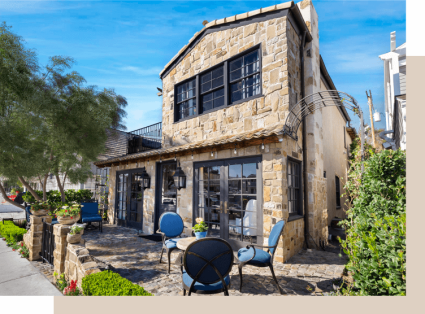
French Country
| Historical significance | Rustic and functional interpretation of the grand Parisian styles for aristocratic country estates and farmhouses |
| Area of origin | Rural France, starting in the 17th century |
- Stone exterior
- Pointed roof
- Distressed wood
- Window shutters
- Contemporary features
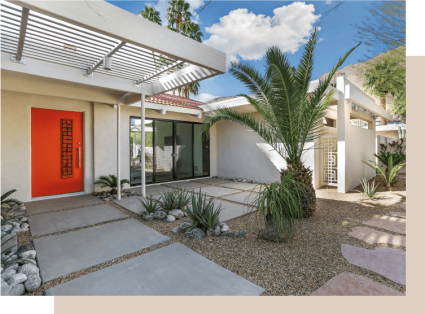
Mid-Century Modern
| Historical significance | Reflected the optimism and economic boom of post-WWII America |
| Area of origin | Primarily the United States, emerging in the post-World War II era |
- Straight lines
- Floor-to-ceiling windows
- Steel and concrete materials
- Open spaces
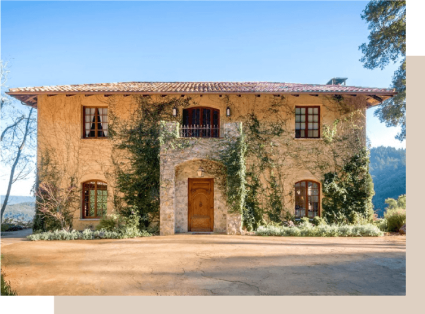
Tuscan/Mediterranean
| Historical significance | Reflects the rustic charm and natural beauty of the Italian countryside |
| Area of origin | Tuscany region of Italy |
- Stucco walls
- Tiled roof
- Wrought iron accents
- Balcony
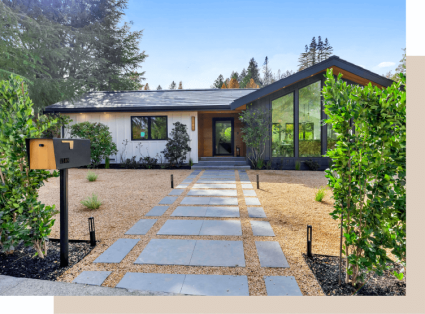
Ranch
| Historical significance | Emerged as a response to the post-World War II housing boom and the growing suburban expansion |
| Area of origin | Primarily the United States, specifically California, starting in the 1930s |
- Low-pitched roof
- Attached garage
- Large backyard
- Open spaces
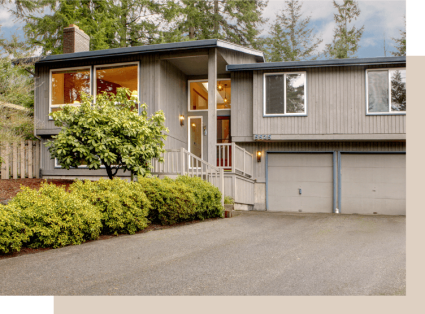
Split-Level
| Historical significance | Became a popular solution for the post-World War II housing boom and the expansion of suburbs |
| Area of origin | Primarily the United States, gaining widespread popularity in the 1950s and 1960s |
- Multiple floors
- Short flights of stairs
- Low-pitched roofs
- Attached garage
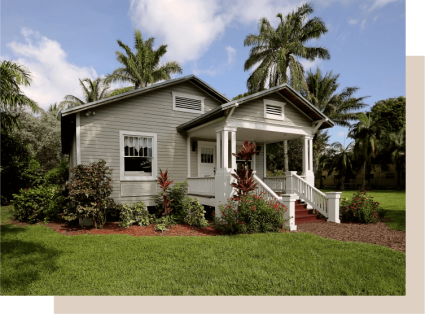
Bungalow
| Historical significance | Practical and informal dwellings for European settlers, designed to be cool and comfortable |
| Area of origin | Bengal region of India, starting in the 17th century |
- One or one-and-a-half stories
- Exposed rafters
- Square, tapered columns
- Stone exterior
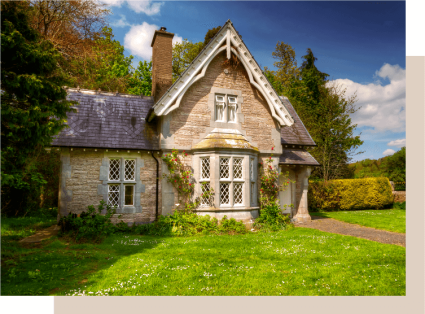
Cottage
| Historical significance | Evolved from peasant homes to romanticized symbols of simplicity and comfort |
| Area of origin | Medieval England and Europe, where they were originally simple dwellings for agricultural workers |
- Condensed layout
- Wood shingle siding
- Small porch
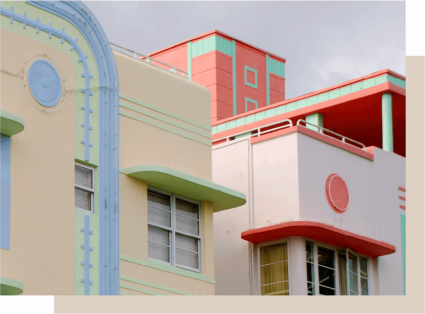
Art Deco
| Historical significance | Represented luxury and glamour during the "Roaring Twenties" and into the Great Depression |
| Area of origin | France in the 1910s |
- Rounded corners
- Stucco walls
- Mirrored surfaces
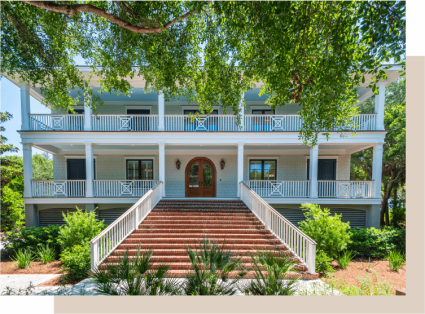
Colonial
| Historical significance | Reflects the development of the American colonies, adapting European building traditions to the New World's climate and available materials |
| Area of origin | North America, starting in the 17th century |
- Two to three stories
- Symmetrical, rectangular shape
- Brick or wood siding
- Central staircase
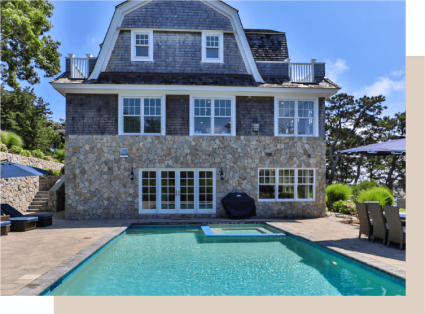
Cape Cod
| Historical significance | Originally designed for New England winters, prioritizing practicality and warmth |
| Area of origin | New England, starting in the 17th century |
- One to one-and-a-half stories
- Wood clapboard or shingle siding
- Symmetrical
- Center door
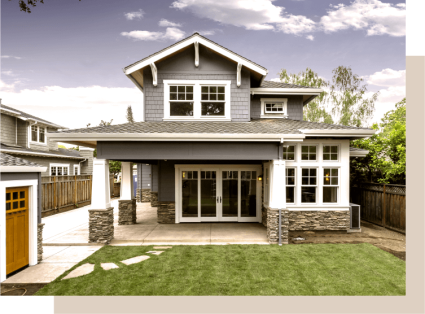
Craftsman
| Historical significance | A reaction against the mass-produced styles of the Victorian era |
| Area of origin | Primarily the United States in the late 19th and early 20th centuries |
- Wood siding
- Exposed beams
- Tapered columns
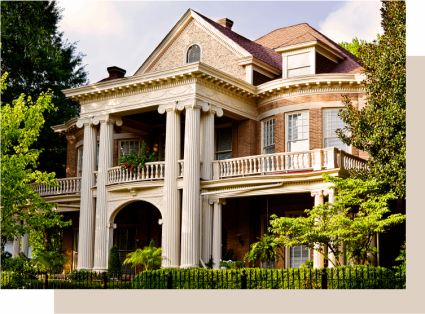
Greek Revival
| Historical significance | Emerged during a period of renewed interest in classical antiquity and a sense of national pride following the War of 1812 |
| Area of origin | Primarily the United States, gaining popularity from the 1820s through the 1850s |
- High ceilings
- Large entryway
- White columns
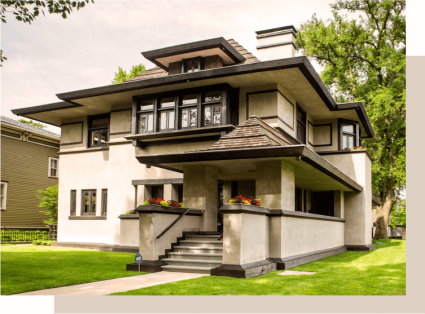
Prairie
| Historical significance | A radical departure from traditional European revival styles prevalent at the time |
| Area of origin | Primarily the Midwestern United States in the late 19th and early 20th centuries |
- Flat roof
- Open floor plan
- Horizontal lines
- Stucco, stone or brick siding
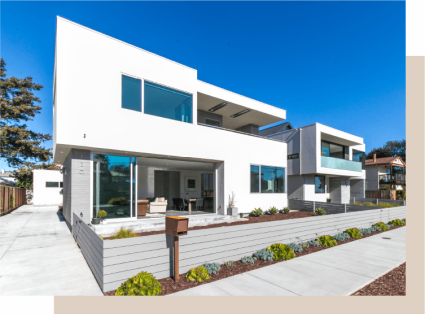
Contemporary
| Historical significance | Represents the architecture of the "now," constantly evolving with new materials and cultural influences |
| Area of origin | Emerged globally from the late 20th century to the present day, building upon and reacting to earlier modern movements |
- Clean lines
- Neutral colors
- Minimalist details

